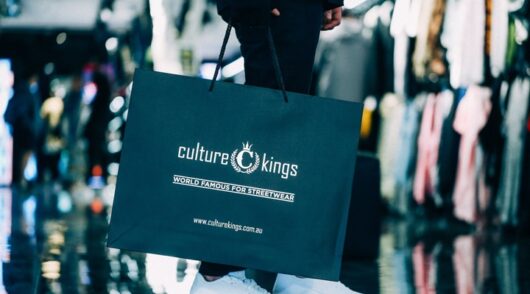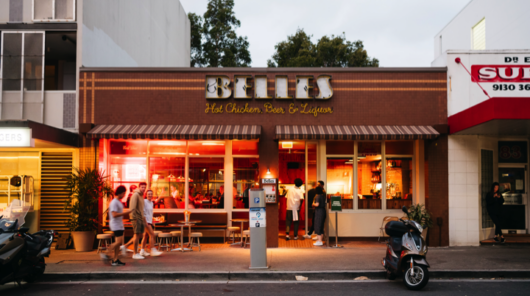Amid a cost-of-living crisis, Australian consumers are seeking value in their purchases, creating an opportunity for private-label brands to emerge as significant players in the retail industry.
Research from Nielsen IQ, cited by Centric Software, the Product Lifecycle Management (PLM) software market leader, shows that 99 per cent of Australian households continue to buy private-label products. Responding to that demand, retailers are increasingly looking to expand their private label product range, even entering into new categories.
Once perceived as inferior low-cost product options in many markets, private-label products are entering a new golden age as relentless inflationary pressure reshapes consumer behaviour. “Store brands are no longer copycats,” says Peggy Davies, president of the US Private Label Manufacturers Association (PLMA). “Our industry is now cutting edge in category after category.”
Globally, private-label products account for 19.4 per cent of overall FMCG sales by value, according to data from NielsenIQ. In Asia Pacific, private labels currently hold just 6.1 per cent of total FMCG sales, although in Australia the share is higher.
So how can retailers capitalise on this consumer shift – and be sure of success? There are many challenges in developing a successful private-label range, not the least of which are developing innovative products, achieving competitive pricing, meeting compliance, and ensuring a level of quality that matches or exceeds that of legacy brand products.
Centric’s e-book details five core strategies retailers can adopt to boost their private-label business. In summary:
Strategy 1 – Optimise costing for high-profit margins: A crucial point in the highly competitive retail landscape, cost optimisation ensures profit margins and sustainable growth. Using next-generation PLM like Centric PLM, retailers can conduct “what if” costing scenarios by assessing the potential impact of changes in cost factors – such as raw materials, labour, or transportation caused by supply chain interruptions – on their product pricing and profitability. That allows informed decisions to ensure products are priced competitively without compromising profitability.
Strategy 2 – Take control of your supply chain: Mitigating risks and increasing visibility into the supply chain are crucial for retailers. Without such a strategic approach, supply chain disruptions can lead to delays in product launches, price hikes and excess inventory. Using Centric PLM’s supplier portal and its real-time communication capabilities, retailers can access up-to-date information on suppliers, lead times, costs and other data needed for effective product development and supply chain management.
Strategy 3 – Streamline compliance for global success: Large multi-category retailers who want to develop private-label products and expand globally face different regulations and standards across multiple markets – even within states in a single country. Compliance hurdles can span labelling and packaging regulations, recyclability laws, product safety standards, certifications, import/export restrictions, documentation requirements and ethical considerations. Using Centric PLM, retailers can minimise the risk of non-compliance with local regulations and requirements by having a centralised repository for important product and supplier information such as formulation, allergens, nutrition, factory audits, expiration dates, packaging and certifications.
Strategy 4 – Innovate to differentiate from national and competing brands: Consumers expect a retailer’s private-label products will be different from those of rival brands, which makes innovation critical to the success of your private-label strategy. This can also create an opportunity to incorporate popular consumer trends into products, responding to consumer demands for sustainability and health and wellness trends as well as value. Developing such products requires seamless collaboration across teams and suppliers, something enabled by Centric’s Visual Boards. This offers intuitive and collaborative whiteboarding tools connected to real-time data and images from other systems like Centric PLM, allowing cross-functional teams to explore innovative concepts and product preferences with regional stakeholders. Faster, quicker decisions can ensure faster time from concept to market.
Strategy 5 – Manage assortment planning the smarter way: Merchandisers, planners and buyers need visibility to effectively select and allocate products from a specific assortment to individual stores and channels. However, so often in retail, disconnects can occur when teams are left with manual boards and sticky notes at one location and product data is stored elsewhere, slowing down the collaborative planning process. Centric Visual Boards helps teams gain visibility across the entire range-planning process, incorporating data and input from multiple groups and individuals in a single platform This allows merchandise financial planning, line planning and assortment planning to take place in a cohesive, simultaneous process, ensuring higher profit margins, an optimised product mix, reduced sampling costs and shorter production lead times.
Retailers can learn more about each of these five strategies and read examples and case studies from some of Centric’s global customers – including Don Quijote, Swarovski, Woolworths South Africa, Adeo, and Auchan – by downloading the complimentary e-book here.






